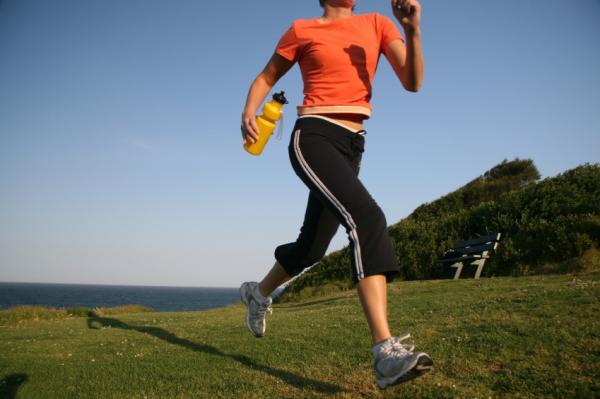If your body tells you that your running speed is a bit too fast or a bit too slow, you should listen to its advice.
A new study published in the March 18 issue of Human Evolution shows that the effectiveness of running changes with speed. Each individual has an extreme pace at which the runner can run the biggest distance with the least strength.
This result countered the long-standing view that jogging consumed a constant amount of metabolic value in a time unit, either fast or slow. In other words, the energy needed to run for a distance is determined whether you sprint or just run exercise. According to Karan Steudel, professor of zoology at the University of Wisconsin-Madison, although sprint seems to require higher, longer time and constant effort is needed to run a certain distance with speed. Slower levels are thought to help balance the difference in metabolic costs.
However, Steudal and Cara Wall-Scheffler of Seattle Pacific University have shown that the energy needs of running change at different speeds. Steudel said: 'There is an extreme speed that makes you less power-consuming.' The maximum efficiency is determined by monitoring the metabolic rate of the runner at many settings at the machine. Metabolic energy costs increase at both slow and fast speeds, which indicates that the average speed is most effective.
The most effective running speed determined in the study varies from individual to individual, but averages about 8.3 miles per hour for men and about 6.5 miles per hour for women in groups of 9 Amateur but experienced athletes. Most gender differences are due to differences in body size and leg length, which have been shown to affect running. In general, runners with larger and higher bodies have higher speeds.
 A new study shows the effectiveness of running changes with speed. Each individual has an extreme pace at which the runner can run the biggest distance with the least strength. (Photo: iStockphoto / Josef Volavka)
A new study shows the effectiveness of running changes with speed. Each individual has an extreme pace at which the runner can run the biggest distance with the least strength. (Photo: iStockphoto / Josef Volavka)
Interestingly, the lowest speed - about 4.5 miles per hour - had the lowest metabolic efficiency, Steudel said was the change between walking and running. For example, both walking fast and running slowly bring physical discomfort.
Although bringing great excitement to athletes and trainers, the way of running also has values that change in the modern human body form: tall, long legs with big breasts and a compact waist.
Modern people who are very effective at walking and running are also relatively excellent, effective mobilization may have given our ancestors the advantage of hunting and gathering. Our ancient ancestors, australopithecine, have square and shorter bones and also short and big legs. According to Steudel, 'their waistline may be hard to recognize, their bodies may look like the gibbons themselves, except for one point they go on two legs. For Homo, they are quite tall and quite large, they also begin to develop longer body forms' with clear waist areas that move more easily, allowing for longer and more efficient stride steps.
Human walking also has extreme speed, so new findings will help researchers determine the importance of different gaits in human evolution. Steudel said: 'It is part of the question of whether walking or jogging plays a more important role in the evolution of Homo body forms.'
Refer:
Karen L., Steudel-Numbers;Cara M., Wall-Scheffler.Optimal running speed and the evolution of hominin hunting strategies.Journal of Human Evolution, 2009;DOI: 10.1016 / j.jhevol.2008.11.002
 Green tea cleans teeth better than mouthwash?
Green tea cleans teeth better than mouthwash? Death kiss: This is why you should not let anyone kiss your baby's lips
Death kiss: This is why you should not let anyone kiss your baby's lips What is salmonellosis?
What is salmonellosis? Caution should be exercised when using aloe vera through eating and drinking
Caution should be exercised when using aloe vera through eating and drinking